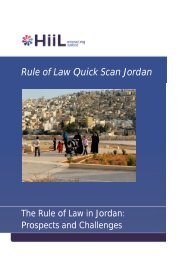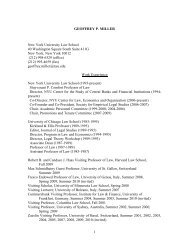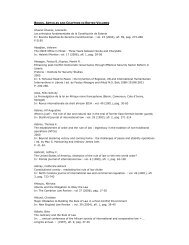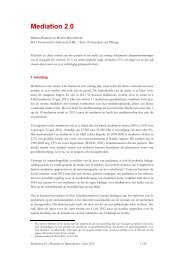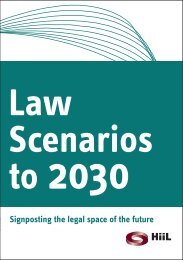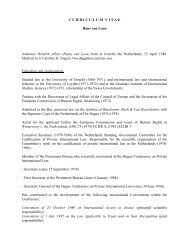Trend Report | Part 1 - HiiL
Trend Report | Part 1 - HiiL
Trend Report | Part 1 - HiiL
Create successful ePaper yourself
Turn your PDF publications into a flip-book with our unique Google optimized e-Paper software.
More recently researchers and reports have begun to focus on new approaches, more bottom up,<br />
working from the problems people actually experience and from their capabilities. Besides doing many<br />
projects and evaluating practices, the UNDP is setting up knowledge networks around legal<br />
empowerment and the World Bank created a Global Forum on Law, Justice and Development.<br />
Governmental organizations and NGO’s such as Open Society Justice Initiative, Oxfam, Amnesty<br />
International, DGZ, USAid, OAS and the Asian Development Bank developed successful programs and<br />
interventions. Many of these programs are now focusing our attention on better legal information, on<br />
lower cost services by paralegals and on specialized services for women and other disadvantaged groups.<br />
We will call these initiatives justice needs approaches, because they have in common that they start from<br />
the actual problems that people experience and their capabilities to solve them. These capabilities are<br />
then strengthened. This can be done by local initiatives, which some proponents of bottom up reform are<br />
arguing for. But, as we will show in this report, justice needs approaches can also be scaled up across<br />
borders, and stimulated by new types of codification, precisely because they start from people’s<br />
problems and not from the laws or the legal system that has been built in their country.<br />
Among the many initiatives, it is not easy to distinguish between the more promising ones and those that<br />
have less chance of being successful. Basic criteria for setting priorities and shared evaluation criteria for<br />
justice needs approaches are still lacking. 6 With some notable exceptions, discussed in this report,<br />
projects tend to be small, serving 1000s of people rather than millions,<br />
and have difficulty scaling up. Many subsidized - free - legal services are offered, but it has been hard to<br />
find funding models that are more sustainable.<br />
Although justice needs approaches have justice needs and capabilities as a common starting point, no<br />
shared vision has yet developed where to go from here. One of the advantages of the top down<br />
strategies is that the vision behind it is clear. Rule of law and access to justice meant good laws and high<br />
quality enforcement. Strategy was thus a matter of writing better laws, arguing for better case law from<br />
courts, and letting lawyers, judges and police enforce the law. That can be planned, budgeted, prioritized<br />
and done. Processes were also clear, because any problem occurring can be reframed as a grievance<br />
about non compliance with a law (see box Grievance and Remedies).<br />
Grievances and Remedies<br />
A common way to picture the process of access to justice is to see it as a process from a grievance to a remedy that<br />
follows five steps, and where each step is supported by activities from (legal) professionals. 7<br />
Recognition<br />
< Legal protection (by laws)<br />
Awareness<br />
< Legal awareness<br />
Claiming<br />
< Legal aid and counsel<br />
Adjudicating<br />
< Adjudication<br />
Enforcing<br />
< Enforcement and civil society oversight<br />
6 See: UNDP, Making the Law Work for Everyone (<strong>Report</strong> of the Commission for Legal Empowerment of the Poor), <strong>Part</strong><br />
II, Chapter 5 (2008) and Hague Journal on the Rule of Law (2011), Issue 2 for the state of the art.<br />
7 This model has been developed first by Felstiner, Abel & Sarat, The Emergence and Transformation of Disputes:<br />
Naming, Blaming, Claiming… (1981), 15 L. & Soc’y Rev. 630, 630-649. It has been adapted later, and is often used in<br />
the so-called human rights based approach to access to justices, see the much cited: UNDP, Access to Justice, Practice<br />
Note, 2004.<br />
<strong>HiiL</strong> <strong>Trend</strong> <strong>Report</strong> – <strong>Part</strong> 1: Challenges and Promising Approaches 15




